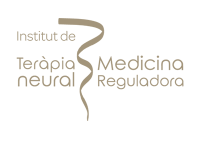How To Fix Saggy Cheeks
12 Minutes
To continue resembling our younger selves, it is essential to preserve our well-sculpted face features. However, this is easier than it sounds. It is natural for our skin to develop wrinkles and fine lines as a result of aging. The skin loses its firmness and suppleness as we age, leaving us with drooping cheeks and jawlines that expose our true age or make us look older.
Fortunately, fast advances in aesthetic medicine have made it possible to age elegantly and delay the onset of aging symptoms.
Nothing could be more beautiful than a woman or man who exudes confidence. Consider a person you know who exudes confidence, that individual is probably successful and well-liked.
Sadly, as we develop, our confidence and appearance may begin to deteriorate. When we observe our reflection in a mirror, we notice drooping cheeks and sagging that was absent in our youth. A face that formerly had cheekbones is now burdened by jowls resembling those of a Bassett hound.
As people age, the contour, shape, and structure of our faces change from a downward-pointing triangle to an upward-pointing triangle. This is related to the drooping of your cheeks, which can drastically alter the appearance of your face. Below you can find the most prevalent reasons for sagging cheeks as well as treatment options.
Aging
Beginning in your mid-20s, your elastin and collagen levels begin to decline as you age. Both elastin and collagen are responsible for the firmness and suppleness of your skin. In addition to normal aging, certain lifestyle choices might reduce the production of both of these beneficial skin stimulants. The primary cause of sagging cheeks in the 20s is facial volume reduction, which commonly occurs with aging.
As a result of volume loss, the cheeks become flat and sagging, causing jowls and a less defined jawline. In addition to sagging face cheeks, other obvious signs of facial volume loss include the formation of a double chin and Nasolabial creases from the edges of the nose to the corners of the mouth.
Rapid weight loss
Because of the rise in fat tissue, gaining weight unavoidably causes specific areas of skin to expand. This can damage your skin’s elastin, making it challenging for your cheeks to recover quickly after a big weight loss. Slow weight loss can help with this, although it may not completely avoid sagging cheek skin.
Pregnancy
Similar to losing weight, pregnancy can result in sagging cheeks. This is the result of numerous things, such as gaining weight and water holding capacity. Along with gaining weight throughout pregnancy, many women experience significant water retention in regions such as their ankles and faces.
Air pollution, high amount of sun exposure, smoking, heavy drinking, and poor nutrition can all lead to advanced elastin and collagen degeneration. Taking care of yourself and boosting your skincare routine with anti-aging products might be beneficial.
Although aging is the leading cause of cheek deformation, it can be worsened by several causes, including:
- Persistent unprotected sun exposure
- Hormonal alterations
- Medical disease
- Stress
- Smoking
- Facial damage or injury
Even though sagging skin is a common aspect of aging, it can nevertheless have a significant influence on your self-esteem, especially if it occurs prematurely. There are, thankfully, a variety of steps you can follow to prevent facial skin from drooping prematurely. By applying antibiotic ointments and maintaining a healthy lifestyle, you will be able to retain the elasticity of your facial skin and prevent any future drooping.
You can lessen the look of a sagging chin and neck by taking a variety of preventive measures. Try the subsequent steps:
Utilize a firming lotion containing retinoid, vitamin E, and vitamin C
Lotions containing antioxidant vitamins can help reduce the signs of aging including the sagging of cheeks.
Reduce stress
It can be beneficial to attempt some stress-relieving hobbies, such as soaking in a bath, sipping a glass of tea, or enjoying a massage, as everyone reduces tension differently.
Use sunscreen every day
Look for sunscreens with at least an SPF 30 that include zinc oxide, which physically blocks the sun’s rays by bouncing light away from the skin.
Avoid facial expressions that cause sagging skin, such as frowning and gum chewing
Certain facial expressions like a persistent smiley face can cause Nasolabial folds. Likewise, crow’s feet near the outer corner of the eyes can be caused by loose skin as a result of aging.
Sleep on the back as opposed to the stomach
Sleeping on your stomach with your face on the pillow can increase the chances of getting a wrinkled face with loose saggy skin.
Hydrate
The recommended daily water intake for people is eight to ten bottles. Staying hydrated can aid in maintaining supple and smooth skin. Consume large amounts of water to rehydrate your skin and eliminate pollutants.
No Smoking
Smoking is one of the most damaging lifestyle choices to the skin. Smoking can significantly accelerate the breakdown of collagen in the skin of the face and the body, which can induce sagging and worsen existing drooping. Additionally, smoking is destructive to your general health, so quit immediately.
Utilize a retinol lotion at night to stimulate the synthesis of collagen
Using a retinol lotion is one of the few established strategies to stimulate the creation of collagen, a substance that helps maintain the elasticity and youthfulness of your skin.
Cleanse your face twice daily to remove irritant environmental elements
Every day, the majority of people are exposed to things that can irritate facial skin, such as perspiration, cosmetics, hats, and pollution. Although the extent of irritation depends on your habits and skin condition, these frequent irritants can hasten the aging process of your skin. Cleaning your face twice daily will help prevent early sagging by eliminating potentially irritating ingredients and soothing your skin.
Consume antioxidant-rich foods to combat damaging environmental influences
Consuming antioxidant-rich foods, similar to using a moisturizer with antioxidants, will help prevent facial skin drooping by protecting your skin and enhancing its capacity to repair itself.
Focus specifically on foods rich in carotenoids, lycopene, zinc, vital fatty acid metabolism, and vitamins C and E. For instance, orange and yellow peppers, tomatoes, avocados, broccoli, and salmon are all rich in antioxidants that keep skin supple and protect it from sun and pollution exposure. In addition, green tea consumption may help prevent skin sagging.
Avoid excessive amounts of sweets and processed foods
While occasional consumption of your favorite sweets and snacks is acceptable, overindulgence may accelerate aging and cause facial skin to sag more quickly. When you consume excessive amounts of sugar, for instance, your body produces chemicals known as advanced glycation products, which can degrade elastin and collagen in your face.
Limit your alcohol consumption to avoid dehydration
Alcohol is generally acceptable in moderation, but excessive intake dehydrates the skin, causing it to age and droop prematurely.
Some study indicates that facial workouts and exercise, in general, can aid in reducing the look and severity of jowls by strengthening the face, jaw, and neck muscles.
Several aspects that influence the skin’s overall health are also considerably enhanced by exercise. This may lower the onset age, severity, and visual appearance of jowls.
Any activity that evenly stimulates or expands the facial muscles without overloading them may aid in the reduction of jowls.
The majority of suggested facial exercises should be performed sequentially to ensure that the facial muscles are exercised evenly. Hold each exercise for five to twenty seconds before releasing. Each activity can be performed eight to twelve times daily.
The following facial workouts may help improve jowls:
- Stretching the mouth as wide as possible with a yawn, then closing it extremely slowly without allowing the teeth to touch.
- Lips that are puckered outwards. This movement is most effective when performed lying down and by drawing the corners of the lips downwards with the fingers.
- To raise the cheeks as much as possible.
- Eating with the head slightly tilted upwards.
- Smiling as broadly since it is comfortable, followed by a slow head tilting motion.
- Combining the lower lip with the upper lip and elevating the head.
- While lying, the tongue presses on the top of the mouth while the neck is curled in toward the chest.
- Tongue placed on the top of the mouth while humming.
- Speaking the sounds “o” and “e” with greater force and exaggerated mouth movements than usual.
Depending on your specific objectives, there are a variety of nonsurgical and surgical facial aesthetic techniques available. The best remedies for sagging cheeks include these:
Injections of Botox
Injections of Botox have a great deal of potential to be one of the greatest ways to cure sagging cheeks. The “Nefertiti Lift” is a non-surgical cosmetic procedure that was named for the Egyptian queen with an elegantly long neck. It entails administering Botulinum toxin injections to the neck, jaw, and lower cheek muscles.
It precisely locates and soothes the thick fibrous band of muscles, which extends vertically from your clavicle to the bottom of your face. In light of this, the Nefertiti Lift:
- lessens the look of sagging and drooping skin on the lower face.
- gives off a lifted, younger appearance
- giving the appearance that the facial features are perfectly symmetrical.
- gives the jawline a distinct definition
- decreases neck wrinkles and fine lines
For those desiring facial restoration and reshaping but not yet ready to undergo the excesses of an extensive cosmetic surgery procedure, the Nefertiti Lift is a fantastic, less invasive therapy option.
Skin Fillers
Our list of the top remedies for sagging cheeks includes dermal fillers like Juvederm, Radiesse, and Teosyal because of their capacity to restore lost facial volume. With their plumping action, these soft tissue fillers can also raise droopy and saggy skin around the cheek area, give you cheekbones, and delicately and naturally highlight your face’s natural contours.
Since they are completely painless, have little to no delay, and produce rapid results, cosmetic injection procedures like dermal fillers have emerged as a popular cosmetic secret for many people.
Hyaluronic acid and calcium hydroxylapatite, two fantastic collagen-stimulating substances included in fillers, provide remarkable improvements to your face even after the body has dissolved the product. Fillers are not permanent, but they do contain these wonderful components.
Fillers are absolutely something to take into consideration if you’re searching for a short-term solution for sagging cheeks. Depending on the type and kind of soft tissue filler your doctor uses, the effects of cheek fillers may last anywhere from six months to up to two years.
Thermage
Thermage is one of the greatest procedures for younger individuals who are just starting to develop modest jowls and have sagging cheeks.
It is a cutting-edge laser skin tightening procedure that heats the found in the roots of the epidermis to firm up the skin’s surface and encourage the synthesis of collagen.
Thermage is a flexible non-invasive cosmetic process that has the ability to lift, shape, and enhance the overall quality of the skin on a variety of facial locations, such as the forehead, eyelids, neck, cheeks, arms, and hands.
To obtain consistent skin tightening outcomes, your doctor may advise a course of two to six treatments spaced several weeks apart.
Ultherapy
One of the greatest treatments for drooping cheeks without extensive surgery or a lot of recovery time is ultherapy. A younger person with exceptional skin laxity would make the best candidate.
Using cutting-edge ultrasonic technology, this non-invasive skin-tightening procedure can lift, firm, contour, and accentuate definition in the facial area. It also encourages the skin to produce healthy collagen, which has anti-aging effects months after therapy.
It’s a quick, painless cosmetic operation that may be completed in the office in thirty to ninety minutes. Expect slight redness or warmth in the treatment region as a side effect, which goes away on its own within a few minutes. Expect subtle but considerable benefits straight after your first session.
Ultherapy has been approved by the FDA to treat a person’s brow, neck, chest, and chin areas in addition to drooping cheeks.
Facelift
The best treatment for drooping cheeks in older people is still plastic surgery, despite the fact that the non-surgical cosmetic procedures outlined above can result in remarkable changes for younger patients. In order to appear younger, a facelift operation successfully elevates and tightens up the sagging facial tissues.
It strengthens the deep facial tissues, smooths out deep folds, and surgically removes loose, extra, and hanging skin from the facial region. There are various facelift varieties, including small facelifts and regular facelifts.
Mini facelift
The best candidates for a little facelift are those who have only minimal jowl and cheek drooping. Shorter wounds that are artfully hidden along the forehead hair line above the ears or in the organic creases surrounding the ears are used to tighten the facial tissues, straighten the jowls, and raise the jawline. A small facelift regenerates the face and is a preventative measure against the outward indications of aging before they become overt.
A micro facelift requires at least a week of recovery time even though it is less invasive and uncomfortable than a full makeover. It is nevertheless carried out under local anesthesia with intravenous or oral sedation.
Standard or traditional facelift
A regular or full facelift may be more realistic for elderly patients who have more evident sagging of the cheeks, jowls, and neck. Unquestionably, this plastic surgery technique is more involved than a small facelift, but the outcomes are well worth it. You can reverse back the time with a refreshed and youthful appearance in the hands of a skilled and competent cosmetic surgeon.
Plasma rich in platelets
Platelet-rich plasma, often known as the vampire facial and heralded as the “fountain of youth,” has attracted a lot of interest lately. While additional research is required to determine whether or not this procedure is effective, PRP is presently seen as a potential non-surgical anti-aging procedure by:
- raising the volume of sagging cheeks
- minimizing wrinkles and fine lines
- Taking care of deep wrinkles
- enhancing the look of acne scars
- improvement of skin complexion
PRP entails three steps, including:
- Taking an arm blood sample.
- A centrifuge will be used to separate the helpful platelet and platelet-rich plasma, that promotes the formation of natural collagen, from the rest of your blood sample.
- To enable the skin to collect the proteins, PRP will be injected using the microneedling method across the cheekbones and other therapeutic locations on the face.
Within six weeks following your initial PRP treatment, the final benefits start to show more clearly. To maximize its efficacy, your doctor could advise scheduling a second consultation or pairing PRP with anti-laser skin renewal or skin tightening procedures.
Do not forget to ask for sagging cheeks before and after procedure pictures so you have a realistic idea and reasonable expectations of the treatments.
FAQs
Why Do I Have Sagging Cheeks In 20s?
Not cleaning your heavily made-up face. In addition to capturing free radical damage that can cause premature aging and discoloration, cosmetics can also trap germs that can cause breakouts. in addition to that, do not overlook sunscreen; stick to it.
In your 20s, there may be a thing as over-caring for your skin. Over time, exfoliation, or the removal of dead skin cells, can enhance the tone, texture, and look of your skin. However, going too far can harm your skin’s protective barrier.
Will I Need Surgery to Address Jowls and Jawline Issues?
Sagging jowls can be treated effectively with a number of different methods. Early-stage jowl-formers may profit from non-surgical treatments like laser treatments, tightening, or dermal fillers, however, more advanced cases may necessitate surgical correction.
HOW SENSES CAN HELP WITH Aesthetics
Senses is a leading provider of luxury addiction and mental health treatment for affluent individuals and their families, offering a blend of innovative science and holistic methods with unparalleled individualised care.
A UNIQUE METHOD
successful and proven integrative holistic conceptOur program consists of treating only one client at a time individually designed to help you with all the problematic aspects of your life. All individual treatment sessions will be held at your private residence.
more infoYour program is designed based on your personal needs. The team will exchange daily information and adjust the schedule as we go. Our therapists will work with you treating integrative not just the symptoms and goes beyong your stay to ensure lasting success.
more infoOur biochemical imbalance can be affected by diet and stressful life events, but it often goes back to genetics and epigenetics. We do specific biochemical laboratory testing to determine an individual’s biochemical imbalance. Combining the results of the lab tests with anamnestic information and clinical tests, we prescribe an individualized and compounded vitamin, mineral, nutrient protocol to help recover from various disease states.
more infoOur experts combine the best from psychological treatment, holistic medicine to support you individually and providing complementary therapies all coordinated from one source working complementing each other integrative.
more infoUsing latest cutting-edge technology-based therapies such as Neurofeedback, tDCS, and SSP, we can track the biological patterns of your body, giving us valuable insight into your health and well-being as well support your brain and body performance and recovery with neuromodulation.
more infoOur chef and nutrition specialist will design your personalized diet plan supporting your body & mind recovery as well as helping with weight management. Nutrition workshops and mindful eating sessions will help you to maintain a healthy lifestyle.
more infoAesthetics TREATMENT LASTING APPROACH
0 Before
Send Request
0 Before
Define Treatment Goals
1 week
Assessments
1-4 week
Integrative Holistic Therapies
5-12 week
Aftercare
12+ week
Refresher Visit
Aesthetics Insights
latest news & research on AestheticsHow Long Until You Can Work out After Lip Fillers
Lip fillers are a wonderful method for achieving fuller, plumper lips. As with any treatment, the correct post lip filler care plan is essential to ensuring a positive experience and a speedy recovery
read moreHow To Prevent Bruising After Botox
However, Botox administration does not always result in bruising; in fact, the vast majority of individuals do not develop botox injection bruises after treatment.
read morePost Botox Care
If you would like to learn more about the things you should and shouldn't do after getting botox, continue reading as we're going to discuss what botox i
read moreAccreditations



























































